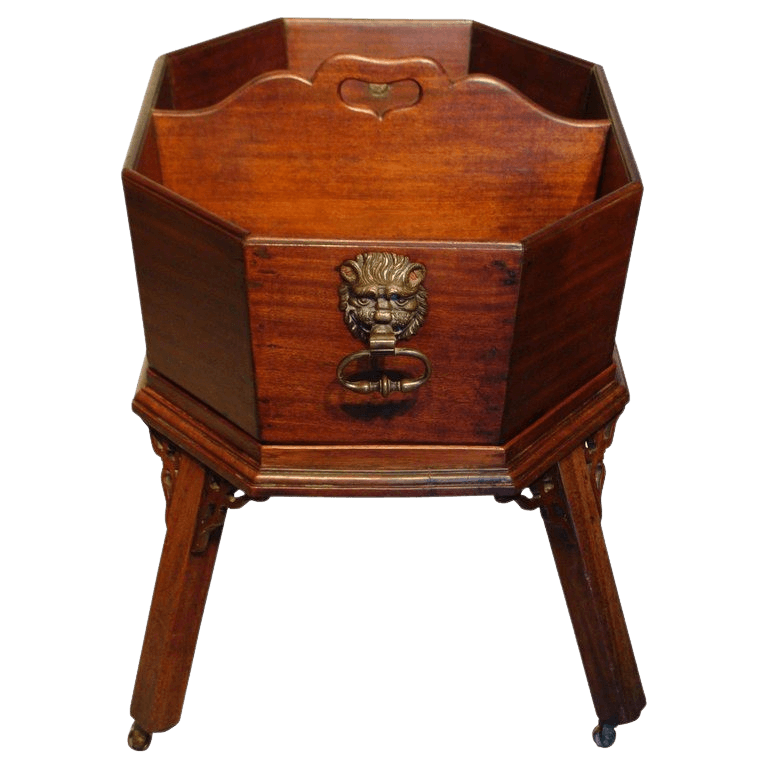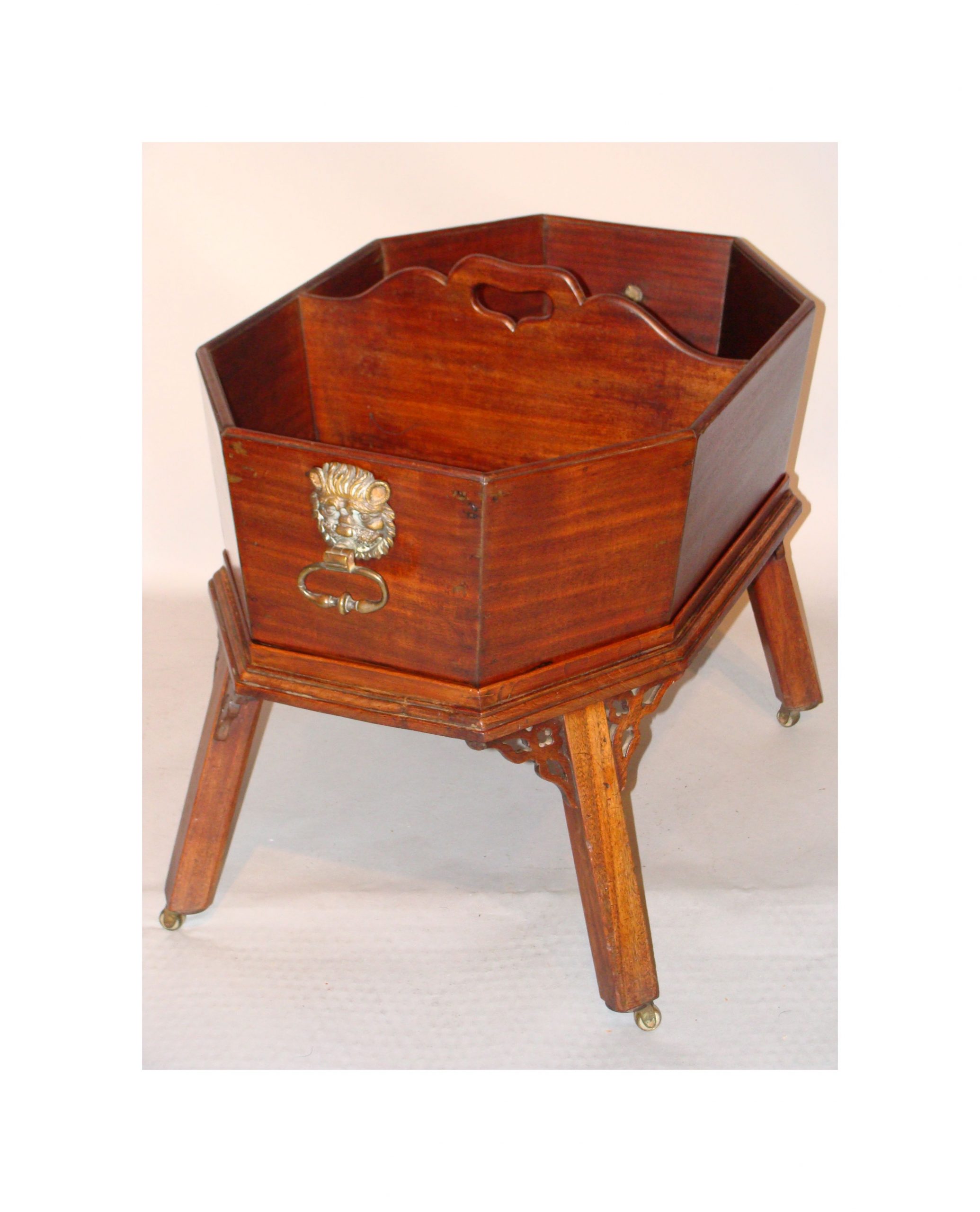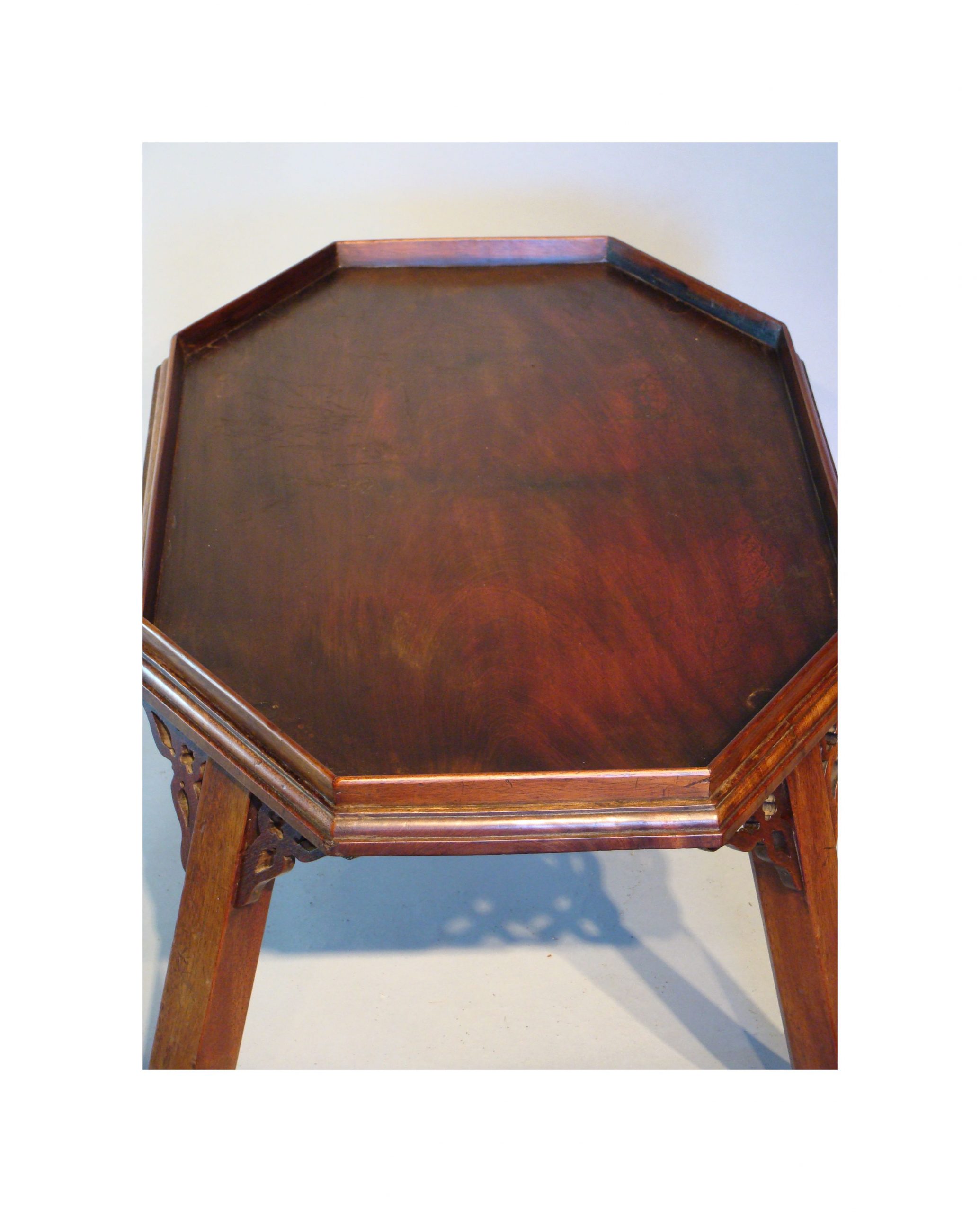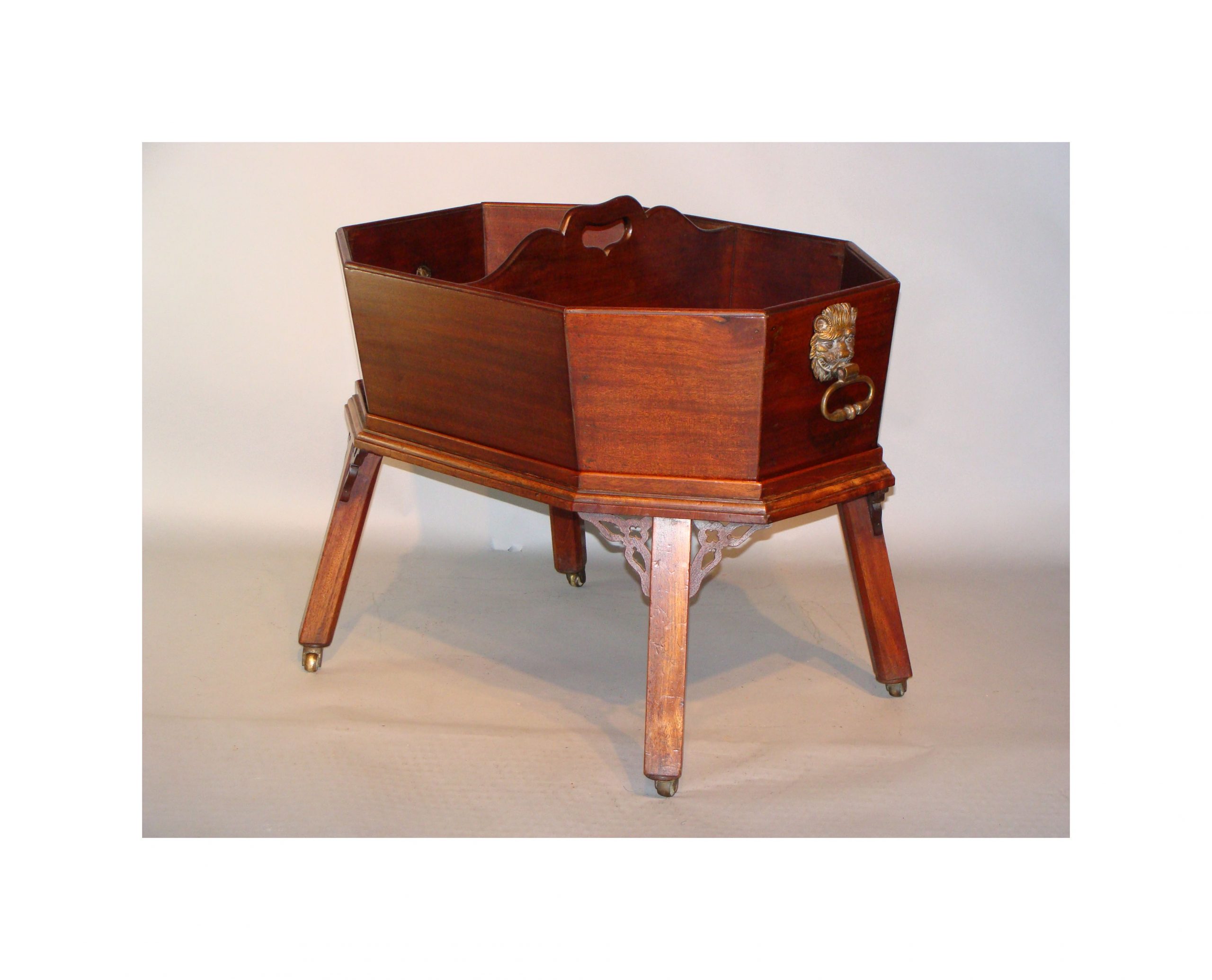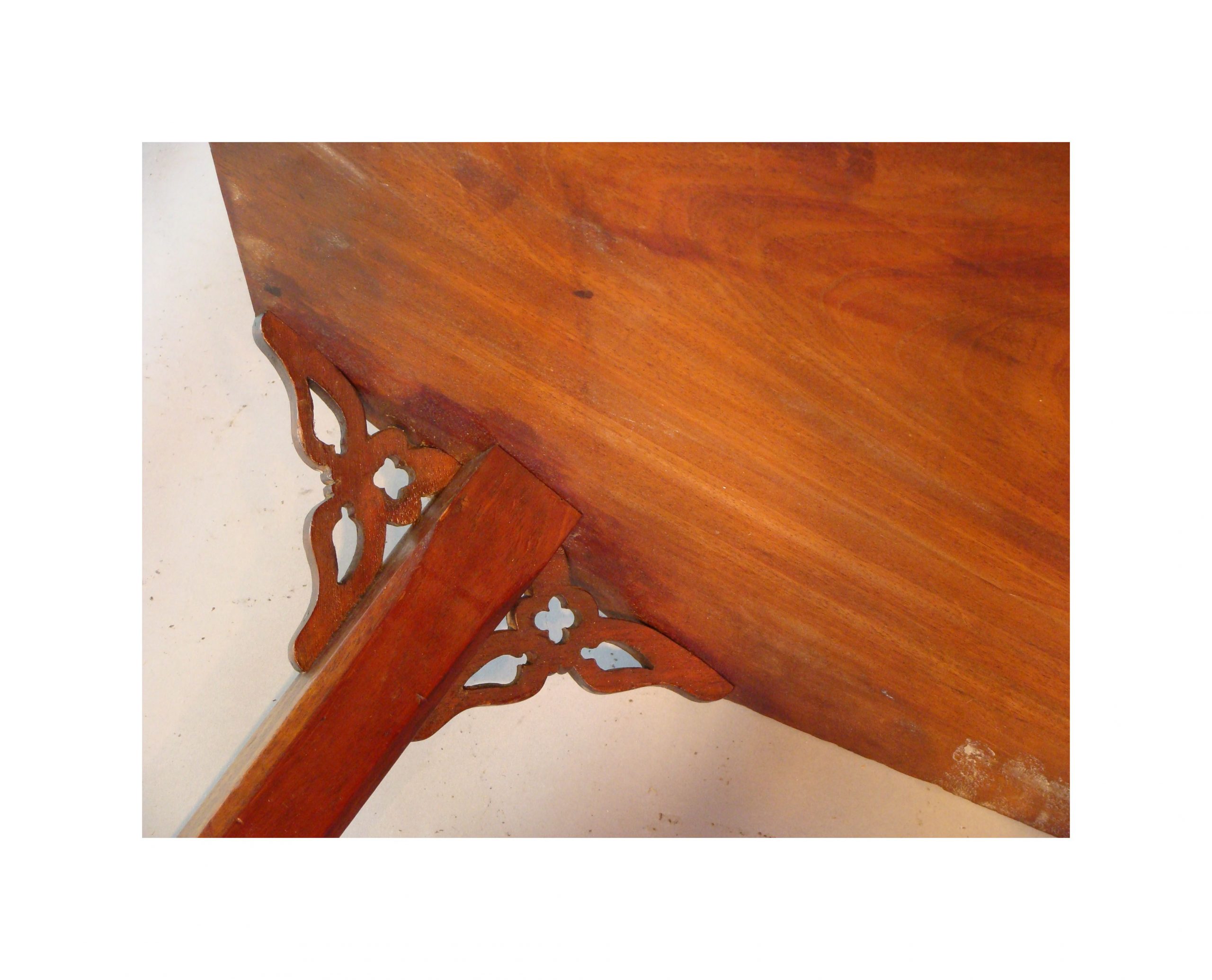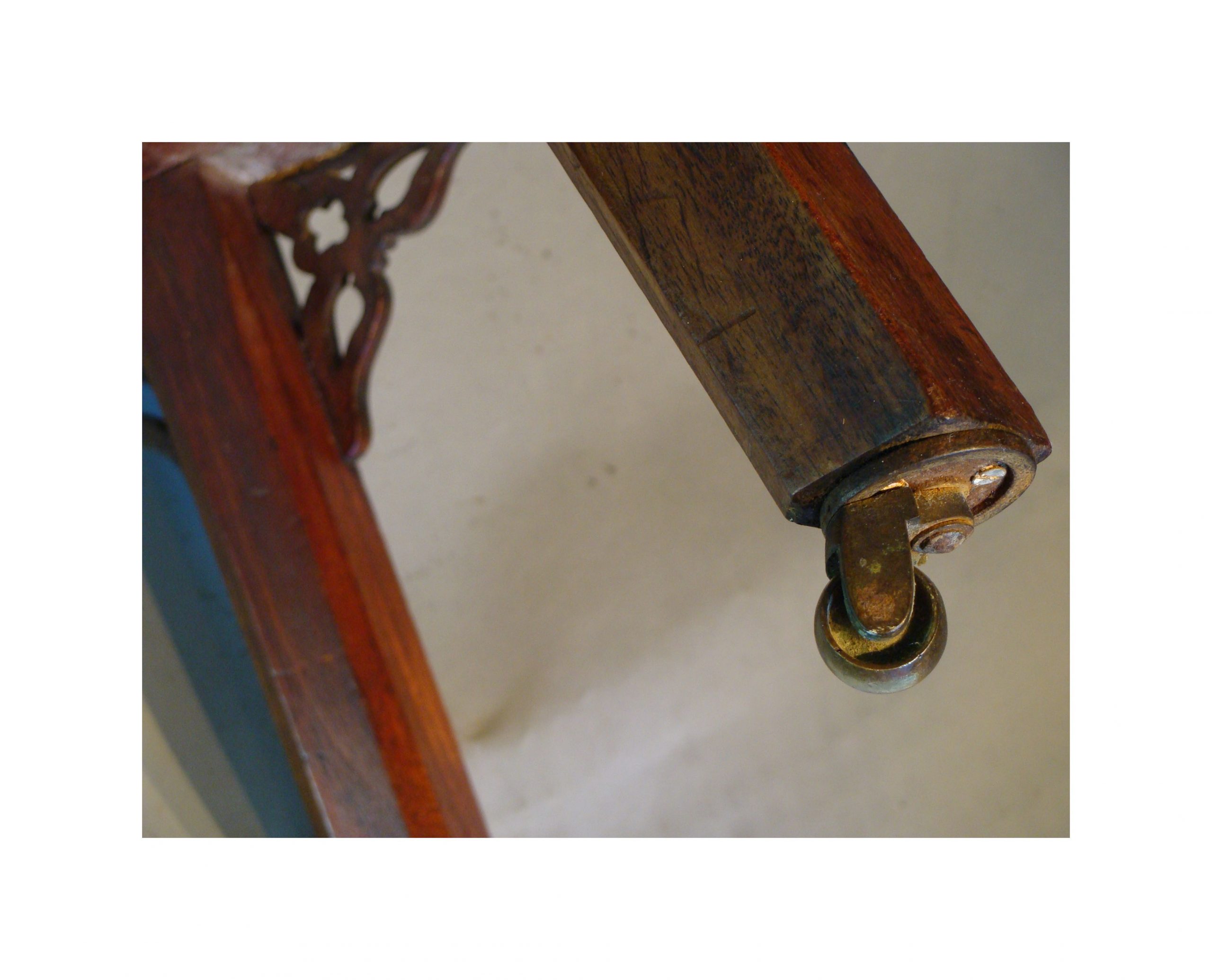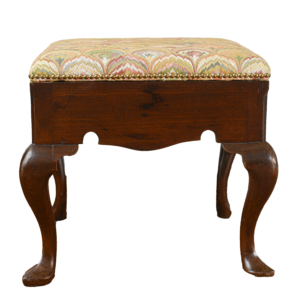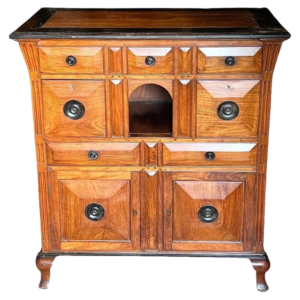Description
A rare English mahogany wine waiter or bottle carrier / stand. Of superb colour and patination.
Mid-18th century, late George II period, circa 1750-1760.
This fine, larger-than-usual, Georgian example retains its original lion mask gilt-brass mounts, and has survived with its original fretted angles.
Rare to find in this excellent condition in view of the considerable use to which it would have put been during the last 265 or so years.
These scarce open-topped Chippendale period wine waiters serve as bottle carriers raised on legs, with brass castors. They were designed to allow bottles to be circulated around a dining room for guests to help themselves. They had divisions, separated from their stands, and also had a central arched-shaped carrying handle.
When not-in-use these wine waiters, or wine wagons, would have been kept under the dining room sideboard (most likely fitted with a lined cellaret / cellarette drawer).
”Wine waiters” are often confused with ”wine coolers” or ”wine cisterns”. The latter are bottle containers fitted with zinc or lead liners to hold ice or cooling water, which was drained by means of a brass or bronze tap.
Measures:
W 81 cm
D 49 cm
H 60 cm.
References:
Ralph Edwards CBE FSA illustrates a “Mahogany Wine Waiter with partitions for bottles”, circa 1750, in The Shorter Dictionary of English Furniture, Country Life, Hamlyn, London (4th Impression 1972) p. 641, fig. 1.
Interestingly three fine antique wine waiters/ wagons were offered at ‘The Samuel Messer collection of English Furniture’ on 5th December 1991, Christies, lots 102, 103 and 108. These were referred to at that time as ”bottle stands”.
Christies sold a wine waiter for £22,325 – lot 40 – on 14th June 2001: in “Mahogany, possibly re-carved and with replaced angle brackets”.



